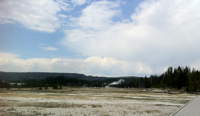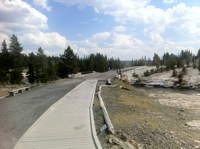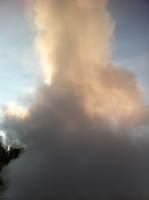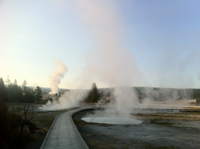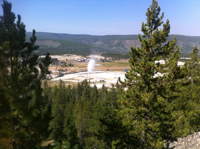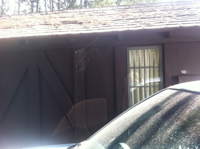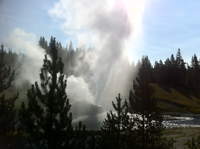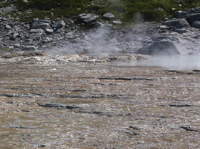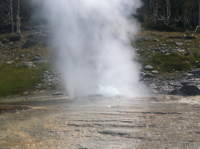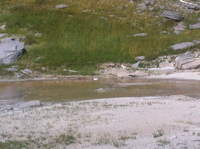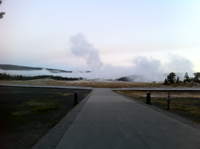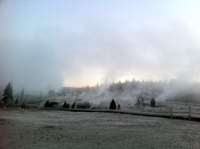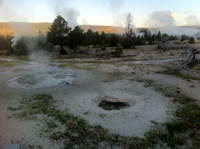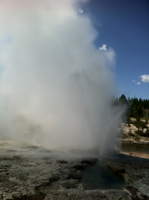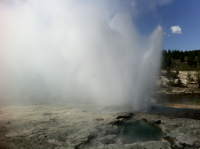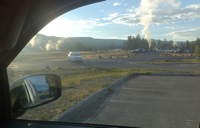The nighttime turned out to be a bit warmer than I expected, but having the full set meant my short wait for Grand was comfy. It was clear, but clouds were forming in the south and encroaching on the moon. Just as the first burst ended (at 9m30s), the moon went behind a cloud. I thought that that would be enough to get a second, but no such luck.
The next eruption of Grand was another one burst, and like so many these days, there wasn't much to distinguish it, other than Rift was well into an eruption and was still erupting as we left Grand. So time to head in and maybe get some more sleep and perform other overhead tasks.
While taking a nap, the cloudiness turned into a show, which I missed. Later I had nothing much to do, and since it looked like it was going to clear up, decided to kill that time down at Fan & Mortar before going to Grand.
So I get down there and the three main Fan vents are active, but nothing spectacular. About twenty minutes later, they are all off. After a few minutes, Angle starts blipping, and after ten minutes of that, I figured I could safely leave. I never did see anything out of Main or Bottom, and the runoff from Bottom was non-existent, so it hadn't done anything recently, either.
So sitting at Grand about 50 minutes later, and look down basin and see a huge steam cloud rising to the right of Giant. So much for "safely leave." So F&M went from what looked like some sort of garbage mode to full eruption in less than an hour. Something to keep in mind for the future.
After Grand, decided to go down and pay my respects/curse those sputs. From the areas that got wet, looks like the wind blew everything to the south, inundating the bridge. The boardwalk from Spiteful north was dry, and there was no evidence of any surges hitting the walkway or gravel on the fly.
Looks like the trail repair crew got to see the eruption, and there was a ranger car parked there too. Then over at Link's runoff, I see this guy who looks like he's standing in the runoff. I yelled, loud, twice, and he finally got back on the trail. But two of the NPS's finest never seemed to notice me or care. They got into the car and drove off.
So got back to the cabin as the sky was starting to get dark and angry, but to the north. So of course the call that Beehive's Indicator came over the radio. I only took an umbrella with me, but with the strong wind, didn't expect to need it for protection from Beehive. Did need it for protection from the sky, as it started to sprinkle just before the Beehive eruption. The wind did nasty things to the height of the eruption, but one of the advantages of being next to the cone is that height is not an important factor. The roar of the jet escaping the cone is much more impressive, and it looks the same for the first 50 feet or so no matter the wind.
As it was, the wind soon died down. As Beehive dropped below about 30 feet and the eruption came to an end.
Grand again erupted after dark, and before the moon was up. Other than the total abandonment of a couple of dozen people when they realized that the 21:00 on the prediction was a start of the window and not an absolute prediction, there wasn't much unusual.

